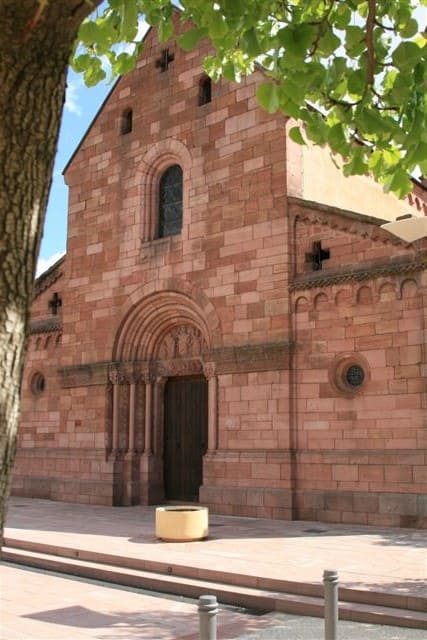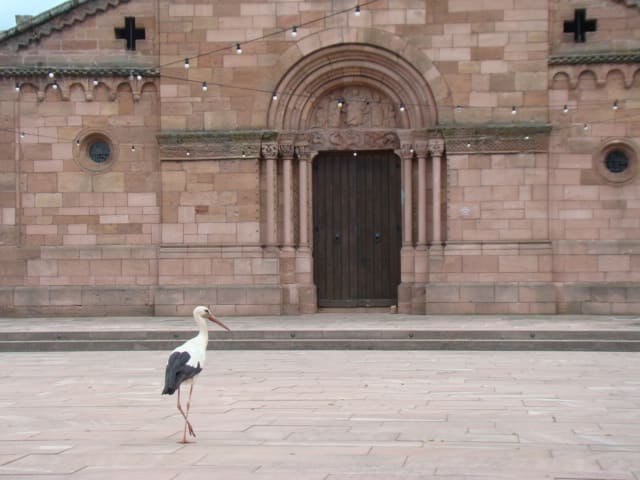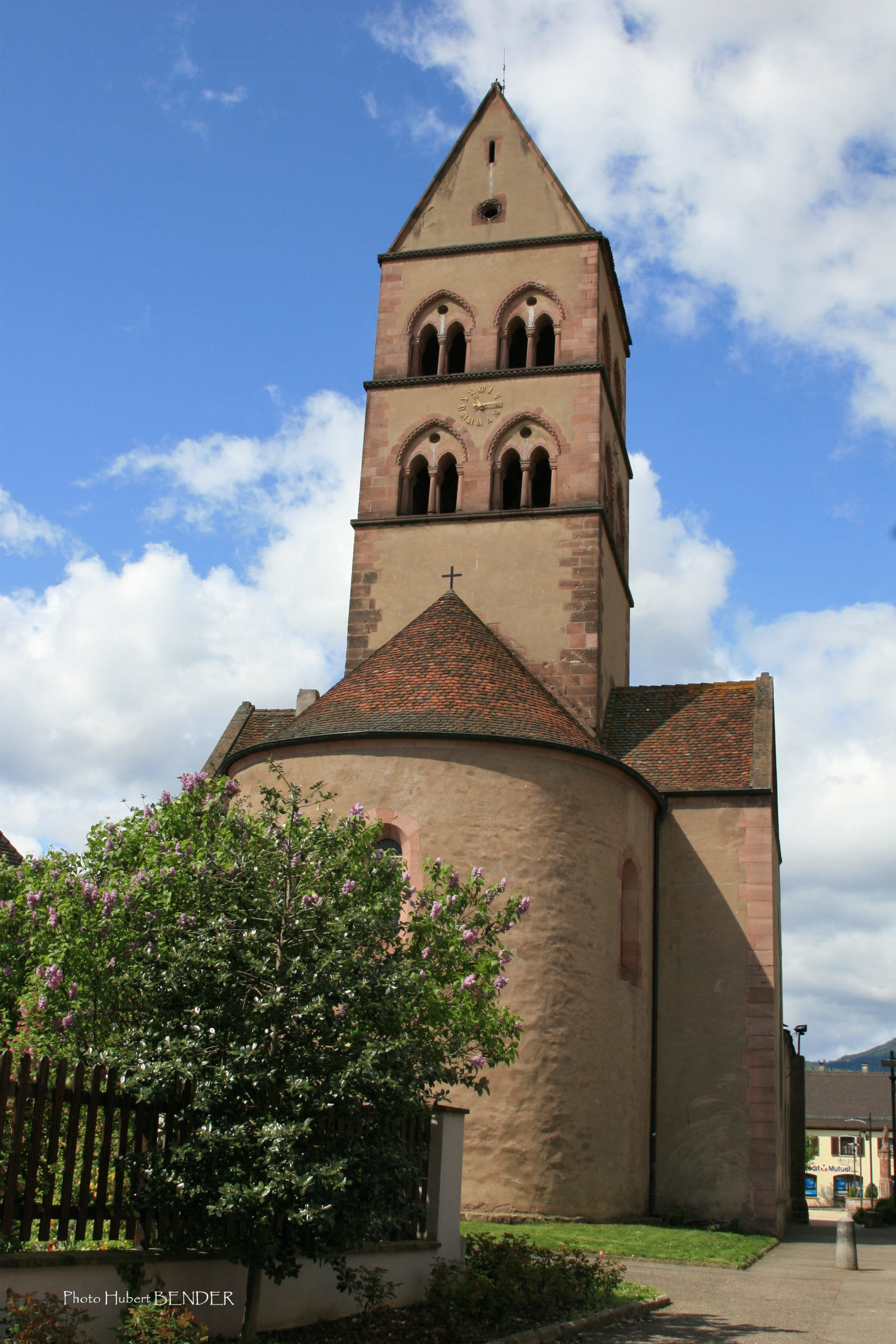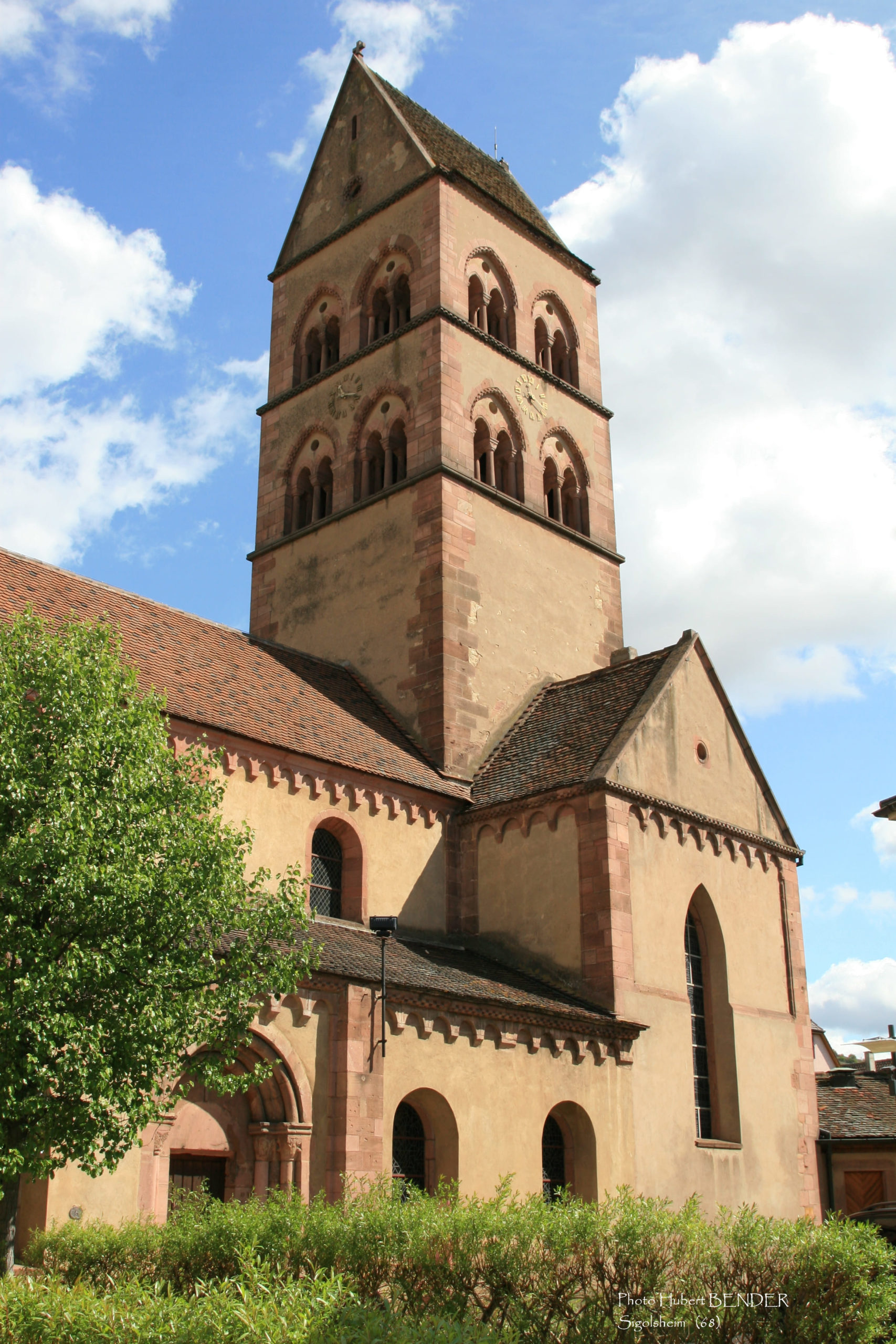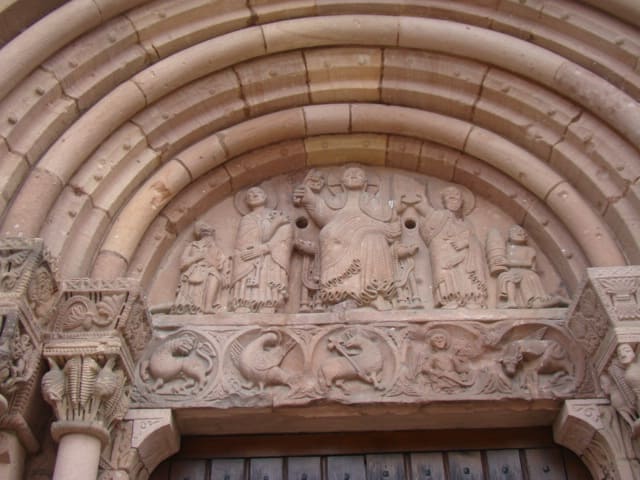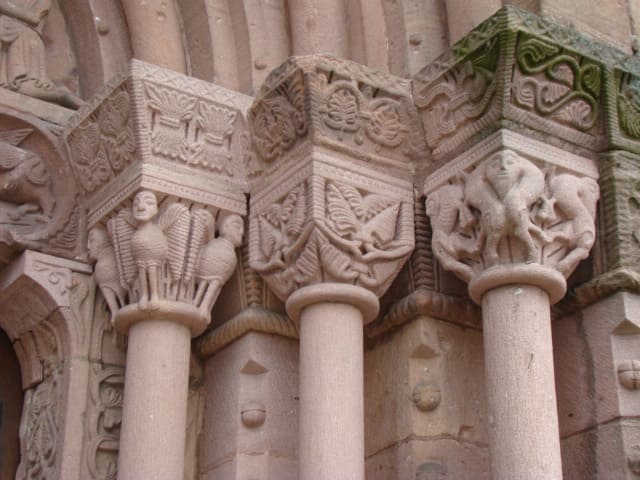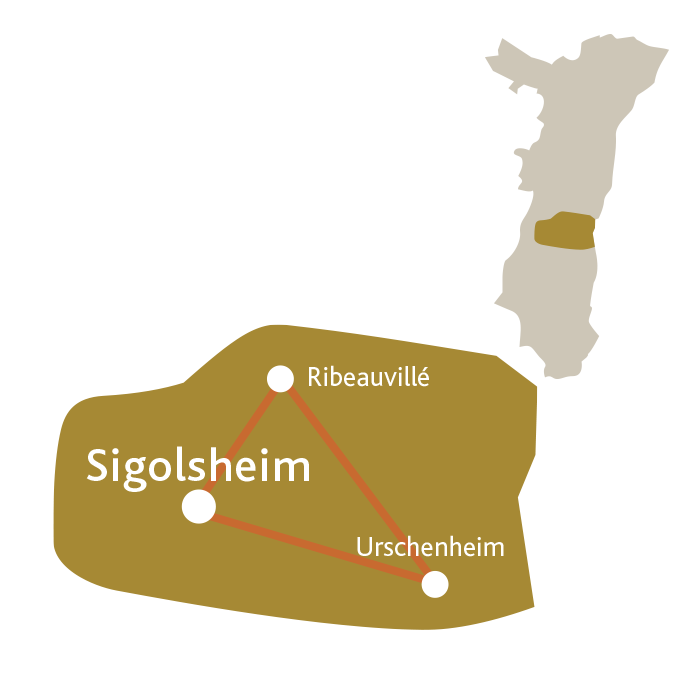Sigolsheim
Église Saints-Pierre-et-Paul
Presentation
The church dates back to the end of the 12th century, but underwent numerous changes during the 19th century and was damaged in the 1944-1945 bombings. Its Italianate facade is a perfect reflection of its interior structure. The capitals of the colonnettes in the doorway feature a repertoire of real or fantastical animals in luxuriant vegetation. The lintel is adorned with five medallions depicting the Paschal Lamb surrounded by the symbols of the Evangelists, and a beautiful tympanum shows Christ giving the key to Saint Peter and the book to Saint Paul, surrounded by two donors, one holding out a purse and the other a cask of wine.
Photo gallery
Get more info
Sigolsheim, a Merovingian village, has been renowned for the quality of its vineyards since the 8th century. The original church, which no longer exists, was once the chapel of a court belonging to the abbey of Etival.
Restoration work carried out after 1945 revealed traces of the original church, in particular the apse, which was wider than the central nave and was discovered under the neo-Romanesque choir built in the 19th century.
The Church of Saints-Pierre-et-Paul in Sigolsheim has been enlarged and restored, and now boasts a wealth of Romanesque features.
The interior is extremely sober. Its originality lies in the vaulted structure of the central nave.
The church has a three-bay basilica plan, with a transept that does not project in line with the aisles, and a tower at the crossing. The chancel consists of a single, wide, semi-circular central apse. The church was built at the end of the 12th century, underwent major alterations in the 19th century (the nave was lengthened by 12 metres) and was restored after 1945.
The nave comprises 3 double bays and one single bay. The square pillars supporting the arches, in alternating sizes, strong or weak, correspond to the vaulting. The double bays are surmounted by semi-circular arches into which the bays of the high nave are inserted.
Here, the central vault is characterised by the simultaneous use of the semi-circular arch and the pointed arch. This choice explains the coupoliform appearance of the vaulting. The cross-sections of the vault are punctuated by the corbels supported on the high piers. The ribs are toric in the central nave and rectangular on the aisles. The portal’s triple-splayed jambs are surmounted by capitals decorated with mermaids, birds and human heads. One moulding shows a stork capturing a snake. This vision of everyday life is repeated on the tympanum. Christ hands over the keys and the book to Peter and Paul, and a nobleman and a winegrower present their offerings. The lintel shows the Paschal lamb between the symbols of the evangelists. The portal as a whole and the style of its decoration bear similarities to the St Gallen portal in Basel Cathedral, completed in 1191.
The two-storey bell tower with twin windows and a gambrel roof was completely rebuilt after 1945, partly using old elements found on site.

